Date of Award
Spring 5-1998
Document Type
Thesis
Degree Name
Honors College Theses
Department
Physics
First Advisor
Dr. Diola Bagayoko
Second Advisor
Dr. Rogers J. Newman
Third Advisor
Dr. Beverly Wade
Abstract
The focus of this project was to develop an apparatus that would aid in measuring the bunch-length of an electron beam at the interaction point of the Stanford Linear Collider (SLC) by utilizing the laser heterodyne technique. This technique involves the superposition of two laser pulses of slightly different frequencies. As a result, a traveling fringe pattern is created, and a bunch-to-bunch variation of the Compton rate would be introduced. The magnitude of this variation depends on the best wavelength and on Fourier transform of the longitudinal bunch distribution. The laser heterodyne technique is implemented by the addition of a 1-km long optical fiber at the laser oscillator output. This produces a linearly chirped laser pulse with approximately a 4.5-A line width and 60-ps full width half maximum (FWHM). The pulse is amplified in a regenerative amplifier and tripled by two nonlinear crystals. A Michelson interferometer is used to superimpose light at two different frequencies, to create the fringe pattern. This method also utilizes a second interferometer in the far infrared to monitor the spacing of the fringe. The bunch-length is determined by analyzing the measured variation of the Compton Rate as a function of the mirror position in one of the interferometers.
Recommended Citation
Carter, Katrina L., "Measuring the bunch-length of an electron beam by utilizing the laser heterodyne technique" (1998). Electronic Dissertations and Theses. 41.
https://digitalcommons.subr.edu/dissertations_theses/41

